For almost ten years, author Kirsten Beyer has been the lead author on the Star Trek: Voyager novel line – including the post-series books commonly called the ‘Voyager relaunch’ – and we thought it was far past time that we shine a spotlight on her work keeping the Star Trek: Voyager story alive.
TrekCore’s Dan Gunther checked in with Kirsten via email in late July, and we took a look back at how she joined the ranks of the Trek literature team.
![]()
TrekCore: After first joining the Voyager novel series as part of 2005’s tenth-anniversary publications, you’ve been the only author assigned to this wing of the franchise for nearly ten years now. How were you first drawn into the Trek literature arena? Was there anything that attracted you to the Voyager storyline in particular?
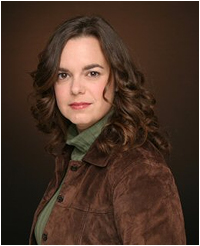
Kirsten Beyer: Like a lot of things in life, I was drawn into writing Star Trek novels sideways. It was never a stated goal or anything I pursued to the exclusion of anything else. It was one of many placed I had directed effort and intention and the first one that clicked.
I never planned on being a writer. But what I know now is that as long as I’ve been able to speak, I’ve been telling stories. What began as play, I eventually studied, first through dance and then through acting. Telling stories has always been the essential way I connect with the world.
I realized a long time ago that I am wired to create stuff and depending on others to allow me to do so…to hire me to act, for example…was never going to be enough. The down time between projects makes me crazy. But no one has to hire me to write. In fact, no one did, for the first ten years I spent learning and honing what craft I possess.
But Voyager was critical for me because it was the first thing I ever tried to write. I started watching when it premiered. I was just out of graduate school and bored. I knew some folks who were working on it and I initially tuned in to watch their work. A few weeks later I was tuning in just to watch the ongoing story. A few months later, I had an idea for a story and began to study the show more than watch it.
I taught myself to write teleplays by studying every aspect of Voyager; character, plot, pace, tone, dialogue, visual descriptions, etc. Then Voyager taught me how to pitch professional projects. Four years into the show, I was invited to meet with the writers to pitch story ideas. None of mine ever sold, but the experience was invaluable, as was the opportunity to interact with the folks who were doing the work I thought I wanted to do.
I had moved onto writing my own original teleplays and screenplays by the time Voyager ended. Novels had not occurred to me. Strangely enough, though, I had bought and read all of the Voyager novels as they were released, primarily because I was developing my own Voyager material at the time and didn’t want to repeat anybody else’s ideas. I was in the middle of pursuing screenplay work when a writer I had become dear friends with was offered her first Trek novel.
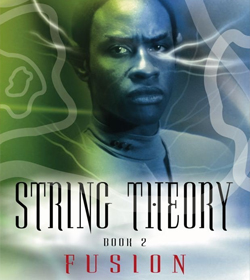 |
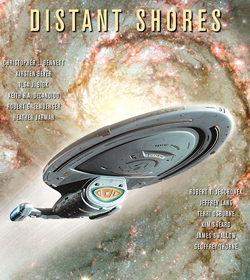 |
| Beyer joined the Pocket Books author lineup during the Voyager 10th Anniversary in 2005. | |
That writer was Heather Jarman and the novel was This Grey Spirit. She suggested I send some samples to Pocket Books and gave me the contact information. I did, and a day later, I got a call from an editor there who wanted to work with me. She left shortly thereafter, and with no obvious way forward, I went back to my other projects.
The following summer, Heather told me I should come with her to Shore Leave, a fan-run convention near Baltimore that really highlights Trek books. She introduced me to her editor, Marco Palmieri, and he was kind enough to ask me for some writing samples. About three months later, I was offered a short story in the Distant Shores anthology and the second book in the String Theory trilogy.
That was a good day. That was the first time anyone offered to pay me to write anything. And it only took ten years of work on Voyager and fifty other ideas. But the key is, as with many things, when the opportunity finally presented itself, I was ready. I’d done my homework and developed the skills required to do the job.
I’m not sure what really attracted me to Voyager beyond the characters, which I enjoyed tremendously, and the potential of the premise. But I invested an incredible amount of time and energy into learning every aspect of the show. I know it now, far better than anyone probably should. I love all of the Trek series for different reasons. Voyager is the one that has my heart, though. It’s like a relationship I’ve nurtured for almost twenty years now. And it’s been an incredibly fulfilling one, both personally and professionally.
TrekCore: With several key players essentially removed from Voyager storyline – Tuvok serving on the Titan, Neelix living on New Talax, Janeway presumed dead – you’ve had the chance to really shine a spotlight on some of the other characters left in the background during the television series, like Harry Kim and Chakotay. How did you approach growing them into more well-developed characters?
Kirsten Beyer: It’s not that different from how I approach all of the characters, but I think it is more obvious with Chakotay and Harry because they needed to come so far. In every case, I’m starting with my instinctive sense of who these people have already shown themselves to be, and then I place obstacles before them that will reveal what I know of them to the reader and allow them to continue to develop.
Chakotay and Harry had both been underserved, in some ways, beyond the show. Chakotay was given command of Voyager in The Farther Shore, and despite the fact that this was where the fans wanted to see him if they couldn’t still have Janeway in the center seat, I was troubled by the sense that in some ways, he hadn’t really earned that position. We needed to see that he wanted it as much as we wanted it for him, if that makes sense. By going deeply into his personal relationship with Kathryn Janeway, allowing him to finally be broken by events beyond his control, I was able to show the strength I’d always seen there as he pulled himself out of his despair and began to chart his own course, separate from Janeway.
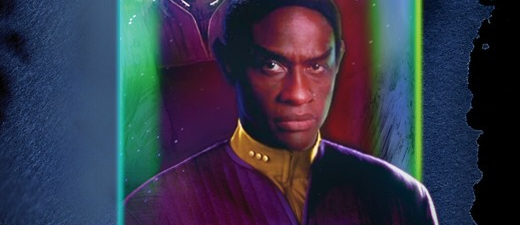 With Tuvok, Neelix, and Janeway out of the series, Beyer had the opportunity
With Tuvok, Neelix, and Janeway out of the series, Beyer had the opportunity
to strengthen the other characters in the cast – like Chakotay and Harry Kim.
Harry was, in some ways, still being portrayed as the same naïve ensign we met in “Caretaker“. He was completely taken in by his former girlfriend, Libby, who had gone from being a musician to a Starfleet Intelligence operative, and supposedly optimistic enough to stick it out even when she refused his marriage proposal. Again, we needed to see him begin to define himself apart from that relationship.
Libby played an integral part in that, by finally admitting the truth to him, but the conflict with his best friend, Tom Paris, was also important. Harry’s world has been turned upside-down. He doesn’t know who to trust and his instincts do not seem to be serving him well. By forcing him to confront this reality, we see him start to wrestle with tough questions he should have been asking years ago. In addition, he had been moved from operations to tactical/security, essentially Tuvok’s old job, and we needed to justify that.
TrekCore: In addition to the original Voyager characters, you’ve also spent a great deal of time creating brand new members of the crew, such as Afsarah Eden and Hugh Cambridge. What was your process in developing these characters and integrating them into the cast?
Kirsten Beyer: In Eden’s case, I knew from day one that the fleet was going to need a new commander. It wasn’t until I was well into developing Full Circle, that Admiral Batiste was created as a source of conflict for her. As someone who knew here well, he was uniquely able to reveal her character. I wanted her to be capable, but also needed to establish her as more than a replacement of Admiral Janeway.
The mystery of her heritage was part of that, as well as her sense that by joining the fleet, she might someday be returning home. That desire had defined televised Voyager. It was such an important theme. In Eden, I was initially looking for a new way to incorporate that theme without running the risk of falling back on the series’ premise.
The addition of Cambridge was also mandatory from the beginning. If there was ever a Starfleet vessel in need of a permanent counselor, it had to be Voyager. Christie Golden had obviously seen this too, and created a character to fill that spot in Counselor Astall. But the more I looked at Astall, the more I realized that she was constitutionally incapable of conflict; her species was happy, by definition.
Hoping that the series would continue beyond Full Circle, I decided I needed a character who could challenge our main characters more. I also wanted to see a counselor unlike any previously portrayed. He had to know and be good at his job, I wanted him to be less sensitive than say, Counselor Troi.
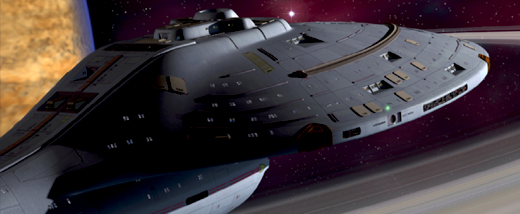 Several new characters were brought on board to fill out the Voyager crew.
Several new characters were brought on board to fill out the Voyager crew.
From the moment I started writing him, I knew his was a voice we needed. He has no patience for pretense, but also comes with his own blind spots. Some people liked him instantly. Others have grown to see his value over time. Some just can’t stand him. He is my most complicated original character and has done a lot to bring out some much needed development from some of the others like Chakotay and Seven.
Though I don’t always do this, in the case of Cambridge, I’ve always had actor Hugh Laurie in my mind when I write him. His character, Gregory House, is the obvious inspiration – minus the drug problems – but really, Laurie’s entire body of work informed Cambridge’s creation.
The key with original characters, however, is that they must earn their position. You can’t just say, “look, isn’t he/she fabulous?” and expect the readers to buy it. Previously unnamed officer we saw in the background a few times can’t suddenly be revealed to be best friends with the main cast. If we didn’t see it happen on the show, we need to see it happen before our eyes on the page. Otherwise, it’s just too hard to swallow.
Eden and Cambridge were built from the ground up. We saw them create the relationships or significance they now enjoy with the more familiar characters. It takes time away from the central cast, but the real trick is finding a way to balance that development with the ongoing needs of the other characters and the plot of any given story.
Go to Part: 1 2
![]()
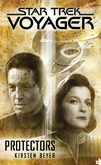 |
Pre-Order Star Trek Voyager: Protectors |
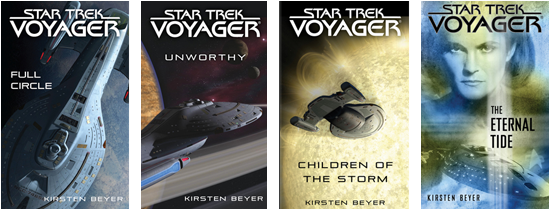 |
|||
| Amazon US Amazon UK Amazon DE |
Amazon US Amazon UK Amazon DE |
Amazon US Amazon UK Amazon DE |
Amazon US Amazon UK Amazon DE |
